When Is The Best Time To Water Plants? Expert Guide To Keep Plants Happy Even In The Heat
Proper watering can make or break your garden. Learn the best time to water plants so your garden can be healthy all summer long.


You may not be aware, but there is a best time to water plants. There are several reasons that timing is important. The most obvious is to avoid evaporation, allowing the plant to access the moisture before the warm air removes it from the soil.
Selecting the best time to water the garden can also help prevent certain diseases. It can also minimize stress on your plants. There are other basic rules such as avoiding overhead watering and in certain cases, the type of water to use depending upon the plant.
But as an overarching concept, there is a best time to water outdoor plants for maximum effectiveness.
When Is The Best Time To Water Plants?
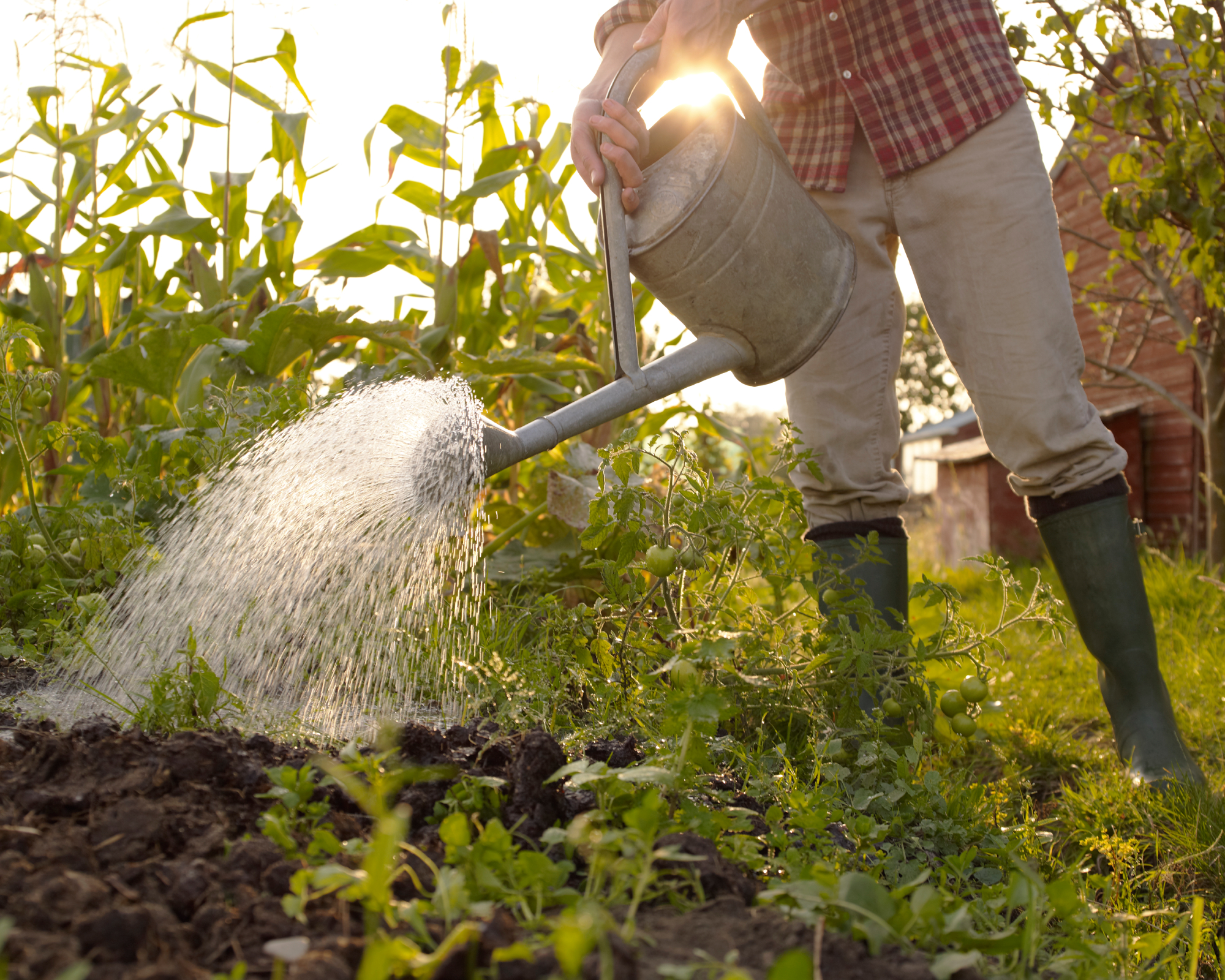
The worst time to water plants is in the mid-day. You can do it if the plant has been sorely neglected or if you need to cool the soil in extreme high temperatures. You must avoid getting water on the leaves as the droplets act like little magnifying glasses and can scorch the leaves.
The second worst time is in the evening. Plant leaves don’t have time to dry before the night arrives and can become prey to fungal diseases. So when is the best time to water plants?
The best time of day to water plants is as early as possible. Many gardeners use timers on their sprinkler or drip set ups to make sure they are irrigating early while still staying in their cozy beds with smart irrigation systems. These are excellent solutions since they also can control the duration of the irrigation, are relatively inexpensive, and customizable.
Ideally, target between 5:00 - 9:00 a.m. to start and finish watering all your garden plants.
Sign up for the Gardening Know How newsletter today and receive a free copy of our e-book "How to Grow Delicious Tomatoes".
Why Timing Matters
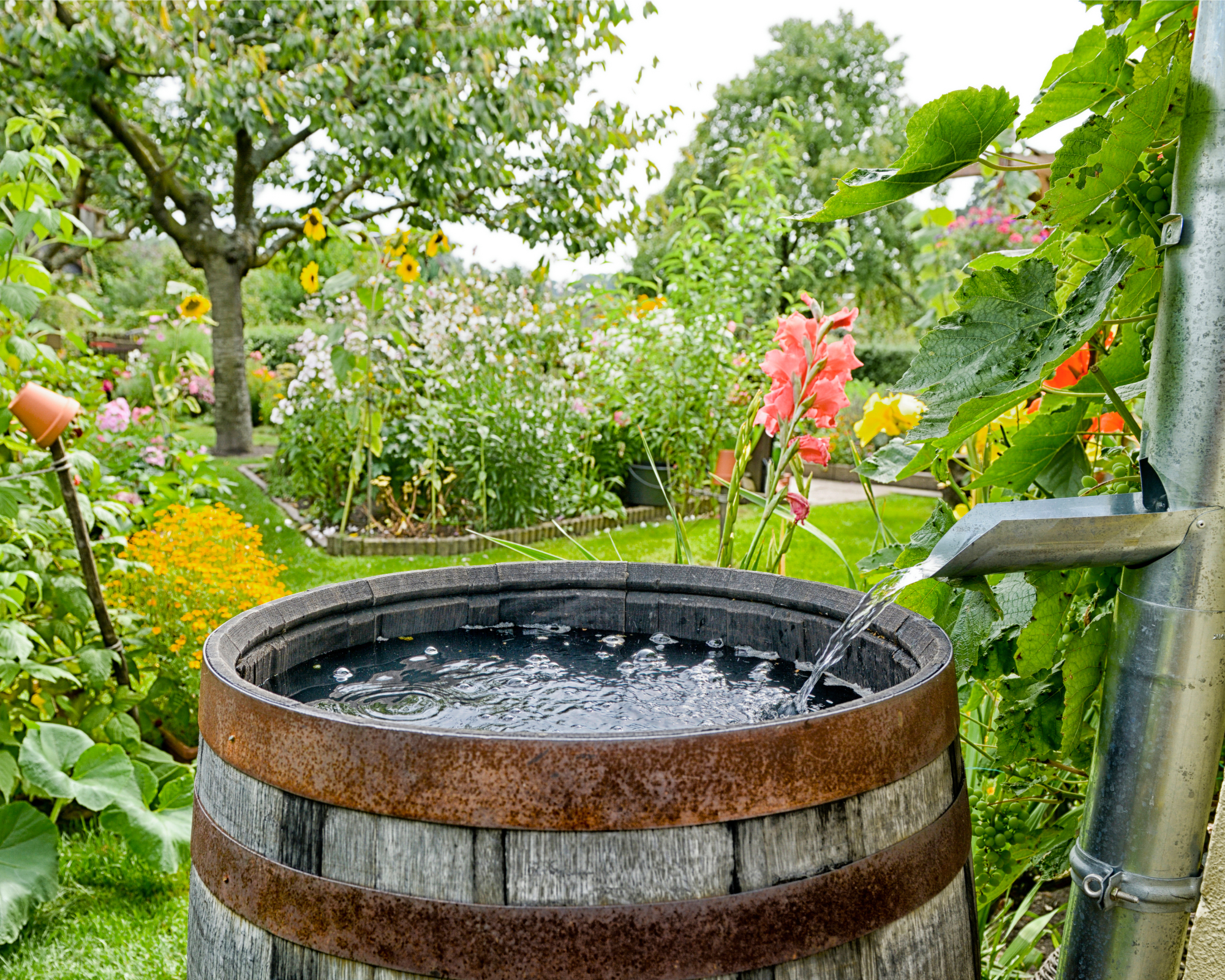
In the summer, the timing matters most because the sun is up early and temperatures start to rise quickly. If you wait too long to water, the moisture will just evaporate in the hot sun, leaving the soil dry. If evaporation happens too quickly, none of the water can penetrate the soil to get to the roots, where plants uptake the majority of their moisture. Up to 50 percent of the water delivered to the garden is lost in evaporation, as well as wind.
It is estimated that homeowners use between 30-70 percent of their water in the summer. This varies by location. And in most regions, water rates go up in summer. The extra water used is costly. Using a rain barrel to collect water from your downspouts is a great way to save money.
Watering at the correct time can also prevent the waste of water and save on your bill. Avoiding garden watering mistakes will keep you plants healthier, too. If you give your plants water when there is time to absorb it, they are much more prepared for the stress of the day.
Plants perform transpiration in the heat of the day, the same time the soil is evaporating. If the plant was not able to uptake sufficient moisture earlier, it will not have the moisture necessary to transpirate. This is the process where plants move water through their different parts and then expel some through their leaves. Without sufficient moisture already in the body of the plant, it cannot perform this important process.
How Much Water Do Plants Need?
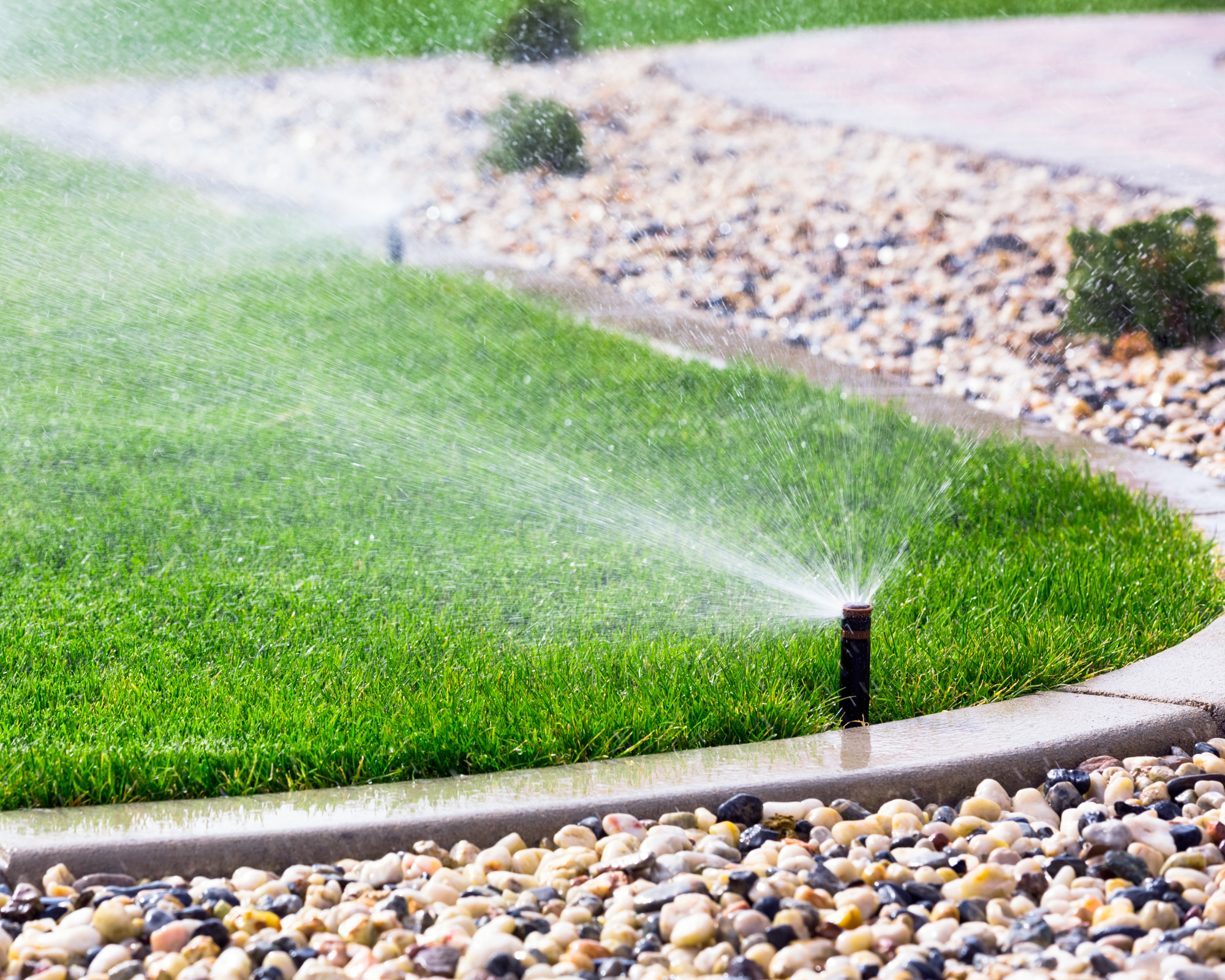
The amount of water a plant needs will vary on its site, the variety of plant, the soil, time of year, and other factors. For instance, most plants will get sufficient water with spring rains and only need irrigation during periods without rainfall. Then when summer comes, they might need a lot of water depending on the temperatures.
New plants require more water than established specimens, while those in containers need more than in-ground plants. A plant on a slope will dry out faster than one in a depressed location. How much to water during a heat wave also differs based on how humid it is outside.
There are many factors that go into the exact amount of water. The average is 1 inch (2.54 cm.) of water per week in the garden. In a 10x10 foot (3x3 m.) garden that means 62 gallons (234.7 L). Plants in sandy or rocky soils may need even more and the watering should be spaced out over the week and not delivered all at once.
Watering Considerations
What works best for tomatoes might not work for azaleas. Let's explore water needs for specific types of gardens and plantings in more depth.
Vegetable Gardens And Flower Beds
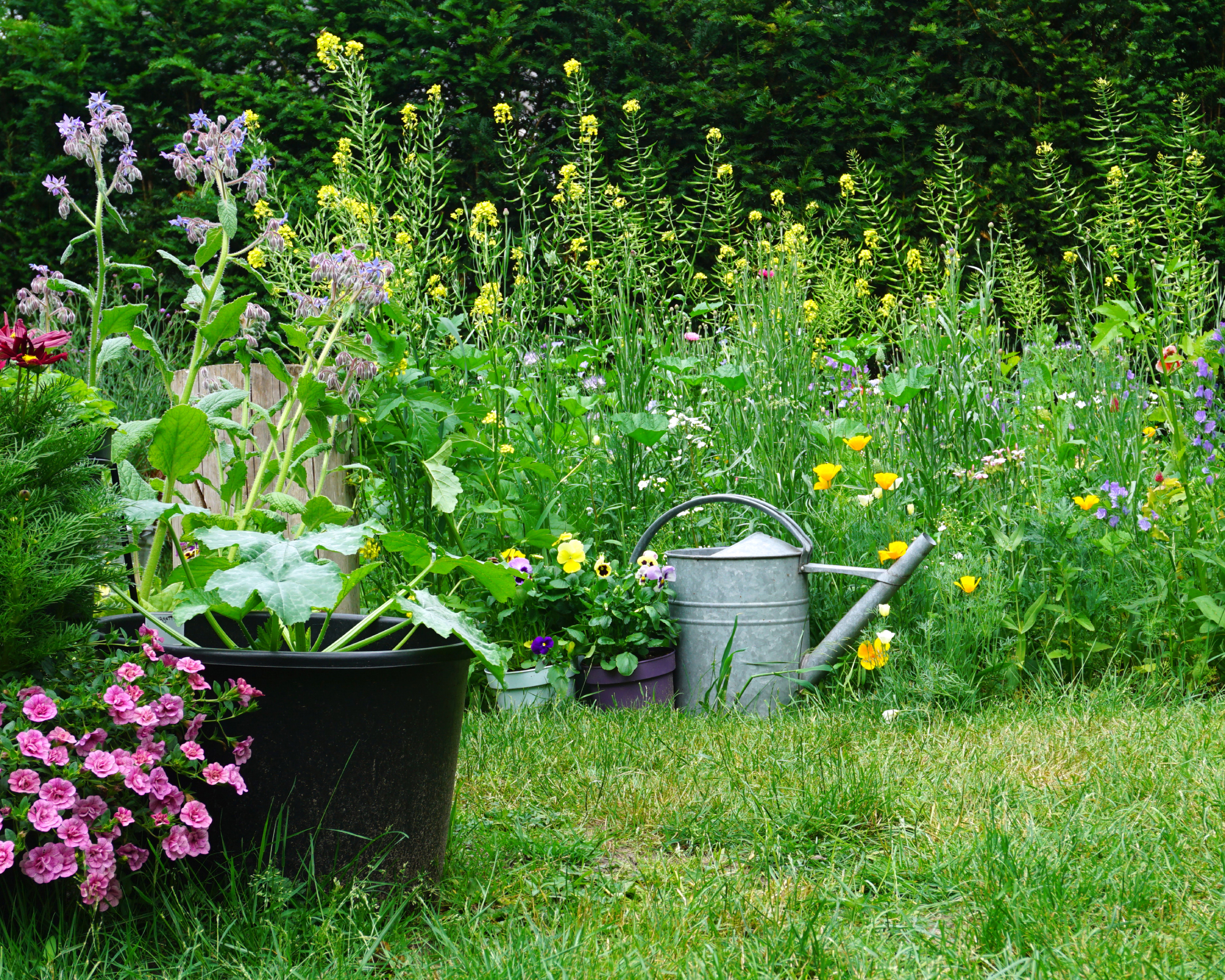
When watering a vegetable garden, you may need more water depending upon the types of plants you are growing. Leafy greens, tomatoes, cucumbers, squash, watermelons, and beans need to be kept evenly moist.
Flower beds with perennials that are established will produce beautifully with the 1 inch (2.54 cm.) per week. They may even do well with less, especially if you have native species. Annual plants will need the average garden water delivery. The retractable garden hose reel, available in the Gardening Know How Shop, is one of our favorite tools to make watering your flower beds easy and efficient without a tangled hose in sight.
Raised Beds And Containers
Raised beds and containers dry out more quickly than plants in a flat site. Using drip irrigation for raised beds is an efficient way to water. Containers, especially, evaporate quickly and their low volume of soil means there is less space to store moisture and the plant roots cannot spread out to seek more.
Trees And Shrubs
Again, the water needs of trees and shrubs can vary. Drought tolerant species that are well established need less than newly installed plants. These should be kept moist and the soil never allowed to dry completely.
New Plants
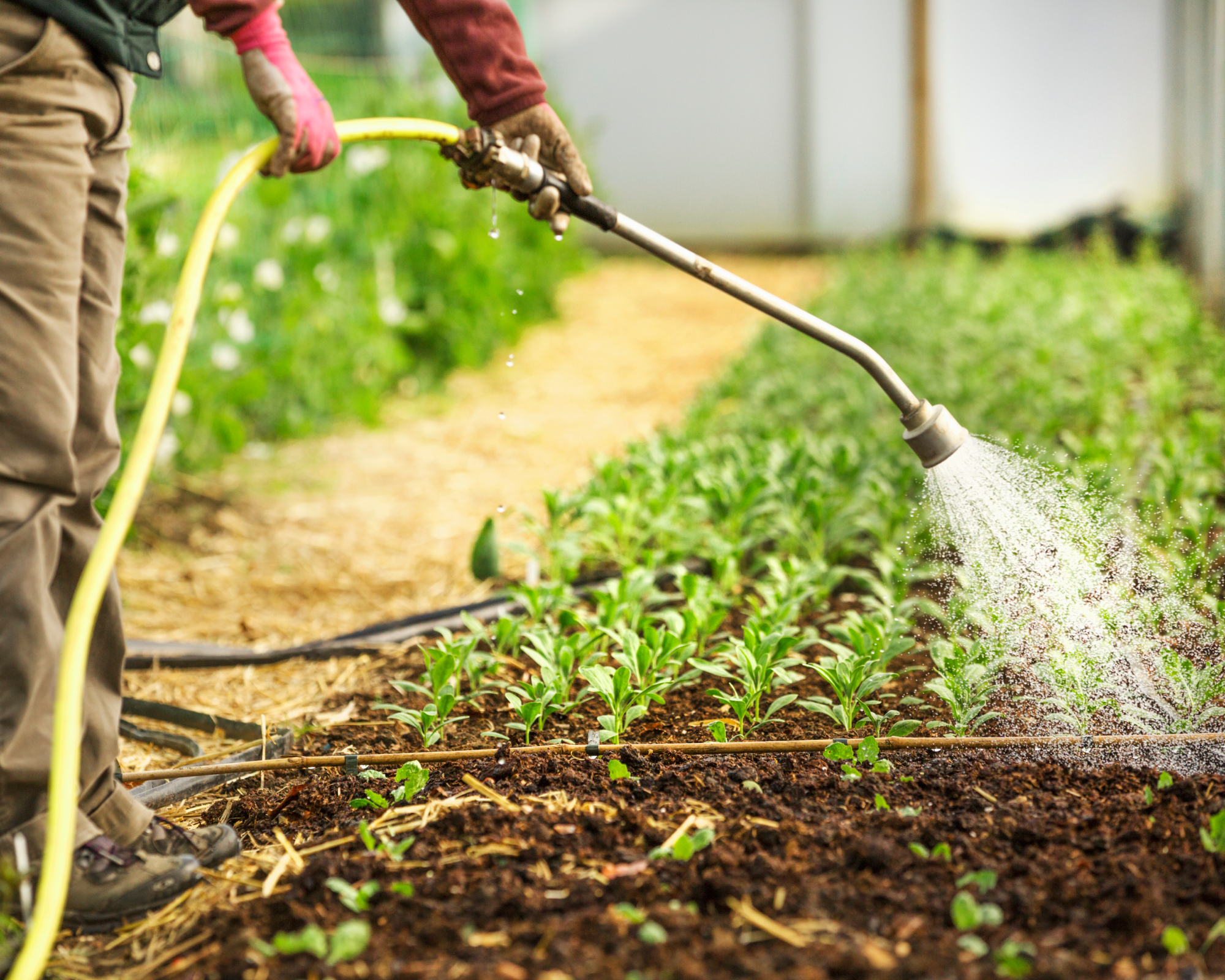
Little baby seedlings or plants that have just been installed outdoors need to be kept moist. They have not yet developed sufficient root systems to gather water from deeper in the soil. They are tender and cannot withstand drying out. It is important to water new plants deeply to help them adjust to the transplantation.
Grass
The best time to water grass is also in the early morning. Grass has high water needs at 1-2 inches (2.54-5.08 cm.) per week. This will vary by species, site, soil type, and sun exposure. Sandy soils need more water, while clay soils need less. Turfgrass in hot, dry climates will need more frequent watering than grass in milder or humid climates.
Frequently Asked Questions
When should I not water my plants?
Avoid watering plants when the sun is at its zenith and in the afternoon when temperatures are hottest.
Do plants absorb water better at night or day?
Plants actually absorb water best at night, but the chances of fungal disease are also highest in the night.
How to water plants correctly?
With the exception of turfgrass, it is best to deliver the water directly to the roots. If you have plants in containers, you can also bottom water potted plants to ensure all of the soil is moistened.
This article features products available from third-party vendors in the Gardening Know How Shop.

Bonnie Grant is a professional landscaper with a Certification in Urban Gardening. She has been gardening and writing for 15 years. A former professional chef, she has a passion for edible landscaping.